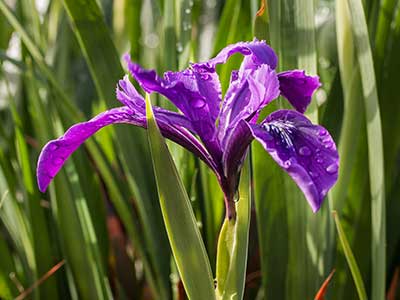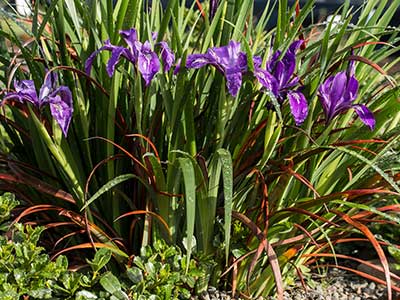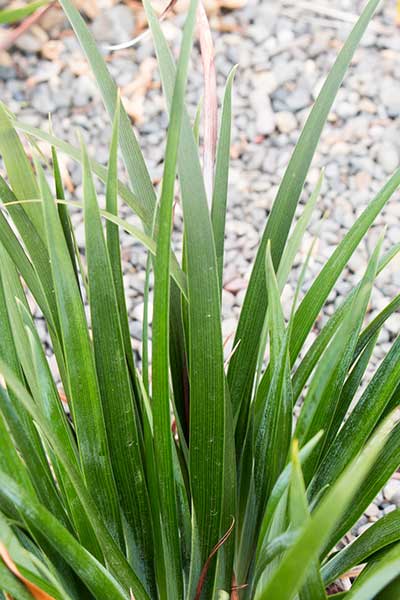Pacific Coast Iris
- Scientific Name: Iris tenax
- Garden: Natives Garden, Xeriscaping Garden
- Plant Type: Herbaceous Perennial
- Evergreen/Deciduous: Deciduous
- Sun/Shade Exposure: Full Sun or Part Shade
- Moisture Requirements: Moist, Well-Drained
Plant Information
Oregon iris or Tough leaved iris is the most northerly species of Pacifica Iris- extending its native zone as far as SW Washington. It's common throughout the western part of our state where it decorates grassy hillsides in full sun to quite a bit of shade with jolly purple flowers April-June. This Iris comes in quite a few colors. Pink, blue, white, golden yellow, red- all hues that have been recorded for this species. Forms grassy clumps in fan shaped displays to about 10″ tall. A large clump can be 30″ across and filled with nearly 100 flowers- these rise on cantilevered stems to 14″ tall. Not very tolerant of disturbance. They HATE division. These plants feature extra vigor and usually bloom within 3 years. Best in light shade, dappled shade on slopes. Average, clay soil is what it wants, and you can increase vigor by double digging the hole very wide to incorporate oxygen in the soil and water lightly and consistently through the first summer. Then none to light in subsequent years. An admirable competitor with introduced invasives and as per all Iris it is supremely deer and even rabbit resistant. Winter deciduous- also, it may go drought deciduous in extremely dry summers. Mixes well with native annuals. Established clumps live for decades. Oregon native plant. Plant type: Herbaceous perennial | Sun exposure: Full Sun, Part Shade, Shade Biome: Deer Resistance, Dry Shade, Low Water/No Water, Oregon Coast, Western Native, Willamette Valley Natives Foliage color: Light Green | Foliage season: Winter Deciduous
Data Source
https://www.xeraplants.comPlant Photos







